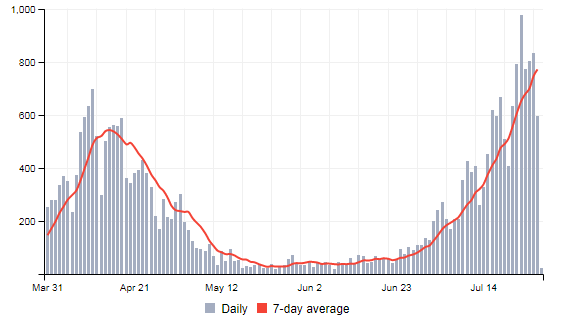A mixed session for Asian equities


That just reaffirms the narrative that the low count from yesterday was largely skewed by the ‘weekend effect’ and the fact that there was a long weekend in Japan.

Did you say twenty-seven, twenty-eight, and twenty-nine? Brilliant! You’ve passed the second-hardest part of doing well in the market. Now for the hardest part. Look again at the numbers and say out loud the number that is the highest. Now say the lowest. Which number is between both numbers? Did you say that twenty-seven was the lowest and that twenty-nine was the highest? If you also said that twenty-eight was in the middle, then you’ve passed the test with flying colors! You are on your way to being very successful in the markets. You may be laughing, but I am dead serious. If it really is that simple to recognize what the market is saying at all times, why do you have to complicate it? The vision test that you have taken proves that you can recognize different numbers, and the I.Q. test demonstrates that you know the relationships among them. Believe me when I say that no other knowledge of the market is necessary. This exam determines that you are clearly capable of an egoless view of the market a Zen view, if you wish. A view that is free of personality needs. Twenty-nine is higher than twenty-seven. No one can dispute that. Not even your ego, no matter how hard it may try.
You’ve proven beyond a shadow of a doubt that you can tell when you’ve got a profit and when you’ve got a loss. There is no question about it. Absolutely none. When you buy something at 27 and it goes to 29, you know that you are showing a profit. Absolutely no doubt about it. Conversely, when you do the opposite, you know that you are sitting with a loser. If you bought at 29 and now the price is lower, you must recognize that you have a loss. Don’t rationalize and say that you don’t have a loss until you sell. And don’t say that you know it will come back. You don’t know that, either. And if you say it’s a long-term investment, you’re just kidding yourself. That’s just another way of not having to deal with a mistake. Your ego is just hoping, trying to shield itself from the pain of being wrong. You’ve proven that you know the difference between a profit and a loss. That’s the easy part. Doing something about it is where the difficulty lies.
There is a random distribution between wins and losses for any given set of variables that define an edge. In other words, based on the past performance of your edge, you may know that out of the next 20 trades, 12 will be winners and 8 will be losers. what you don’t know is the sequence of wins and losses or how much money the market is going to make available on the winning trades. This truth makes trading a probability or numbers game. when you really believe that trading is simply a probability game, concepts like ‘right’ and ‘wrong’ or ‘win’ and ‘lose’ no longer have the same significance. As a result, your expectations will be in harmony with the possibilities.
Around 84,545 fraud cases – involving about Rs 1.85 lakh crore – were reported by scheduled commercial banks and select FIs during 2019-20, an RTI activist said, citing information received from the Reserve Bank of India.
RTI (Right to Information) activist Abhay Kolarkar said that he had sought various banking related queries under the jurisdiction of the RBI in June 2020, and the replies to the same he received a few days back.
Kolarkar in his RTI query sought to know how many fraud cases have taken place during April 1, 2019 to March 31, 2020 and the amount involved in it.
The RBI stated that the total number of frauds reported by Scheduled commercial banks and select FIs during Financial Year 2019-20 is 84,545 and the amount involved therein is Rs 1,85,772.42 crore.
To the query about how many bank employees are involved in fraud cases and how much amount is involved, the RBI replied that the information on the question is not available.
“However, it may be noted that total number of frauds reported to have been committed by staff, as reported by Scheduled commercial banks and Select FIs during FY 2019-20 is 2,668 and amount involved therein is Rs 1,783.22 cr,” the central bank said.
The RTI also sought to know how many consumer complaints received by the RBI’s 15 ombudsmen offices during April 1, 2019 to March 31, 2020.
During July 1, 2019 to March 2020, about 2,14,480 complaints were received.
The highest number of complaints received by SBI- 63,259, HDFC bank- 18,764, ICICI bank- 14,582, Punjab National Bank- 12,469, Axis bank -12,214 followed by other banks.
The central bank in its reply said about 56,493 complaints received between April 1, 2019 to June 30, 2019.
The RTI query also sought information on number of branches exited by banks and those closed after merger during April 1, 2019 to March 31, 2020.
To which, the RBI provided information about the ‘number of merged branches with another branch of same bank’ during 2019-2020, which stood at 438 branches — SBI – 130, Central Bank of India – 62, Allahabad Bank – 59 and other banks.
The total number of branches closed in 2019-20 are 194, including 78 branches of SBI and 25 of Fino payments Bank limited.